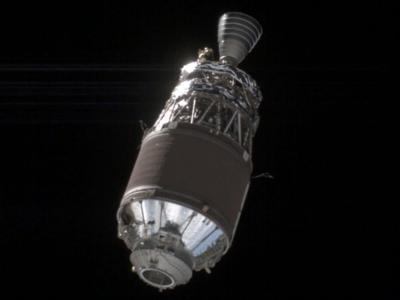Fri, Aug 09, 2024
Successful Mission Intercepts Space Junk for a Scouting Mission
Astroscale Japan Inc got some beautiful shots of orbital debris after the first successful flight of their Active Debris Removal by Astroscale-Japan (ADRAS-J) satellite.

Their unit made a flyby of a floating remainder of a Japanese upper stage rocket body, taking a series of pictures of the spinning junk as it circled the Earth. It's great news for space enthusiasts, since the space race and its new commercial age has tended to leave a good deal of material orphaned in orbit. That's quickly becoming a danger to satellite and space station options, eliminating orbital tracks from consideration in order to avoid high-speed impact damage. ADRAS-J's feat is the first time a satellite has demonstrated the ability to safely approach and operate close to large debris, the first step in a technical evolution that will one day rendezvous forcefully de-orbit such objects. Space cleanup is still in its infancy, but Astroscale's glossy jpegs certainly show that it's possible to at least complete step one in plucking trash out of orbit.

ADRAS-J's scouting mission showed that the piece in question retained its original payload attachment fitting, which is Astroscale's target for an ADRAS-J2 mission. That should allow the next satellite to close with the rocket stage, connect to it, and engage its thrusters to drag the whole bus-sized rocket to its atmospheric doom below. Getting in close and personal isn't easy, though, and making actual contact with the target will be much tougher than simply sitting and snapping pictures from afar. Objects in low Earth orbit generally speed along in the neighborhood of 15 to 20,000 miles an hour, adding considerable complexity in not just launching to intercept it from earth, but to snatch it in a secure enough position that will ensure the debris' structural integrity as it's pulled out of orbit. A poor connection could cause even more problems than it solves, since large debris could inadvertently break up into many smaller pieces with improper handling.
More News
From 2023 (YouTube Edition): "Ain’t Your Daddy’s Super Cub”—Don Wade Co-owned by Don and Ron Wade—the former of Don’s Dream Machines, a storied >[...]
Pilot-Rated Passenger Reported That The Pilot Did Not Adequately “Round Out” The Landing Flare And The Airplane Bounced And Yawed To The Right Analysis: The pilot state>[...]
Dead Reckoning Dead reckoning, as applied to flying, is the navigation of an airplane solely by means of computations based on airspeed, course, heading, wind direction, and speed,>[...]
Aero Linx: Lake Amphibian Club This website is created and sponsored by the Lake Amphibian Club, to help spread the word about these wonderful, versatile amphibians that can land j>[...]
“I am deeply honored to be sworn in as NASA administrator. NASA’s mission is as imperative and urgent as ever — to push the boundaries of human exploration, ignit>[...]
 Classic Aero-TV: In Praise of Alabamas Patriot Aircraft USA
Classic Aero-TV: In Praise of Alabamas Patriot Aircraft USA NTSB Final Report: Cirrus Design Corp SR22
NTSB Final Report: Cirrus Design Corp SR22 ANN's Daily Aero-Term (12.21.25): Dead Reckoning
ANN's Daily Aero-Term (12.21.25): Dead Reckoning ANN's Daily Aero-Linx (12.21.25)
ANN's Daily Aero-Linx (12.21.25) Aero-News: Quote of the Day (12.21.25)
Aero-News: Quote of the Day (12.21.25)




